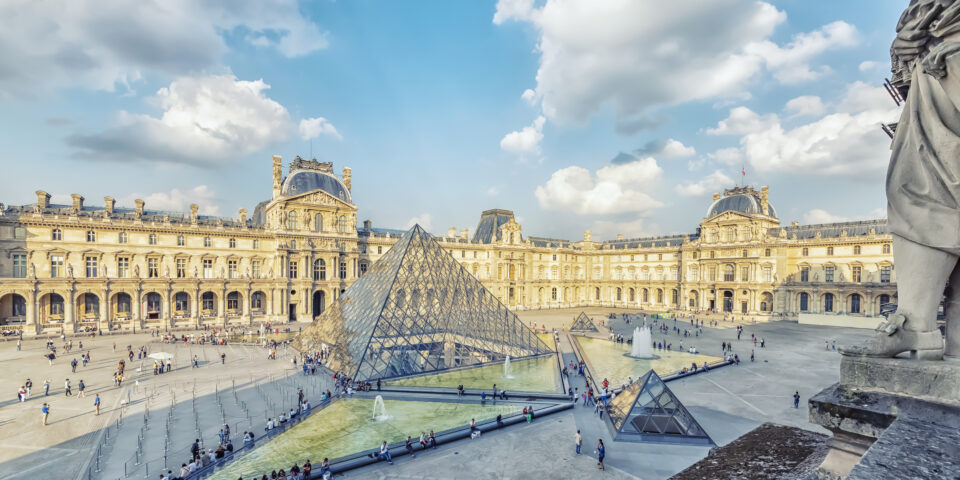- Julia Leoni
- The best of France and its regions, Ile de France, Ile de France, Your guide: a committed professional
Louvre Paintings : a must see in Paris
The Louvre Museum is one of the most famous and largest museums in the world. It is located in the heart of Paris, France and is housed in a stunning former royal palace. The museum is home to over 35,000 works of art and artifacts, including some of the most famous and recognizable pieces in the world.
One of the most famous works of art in the Louvre is the “Mona Lisa”, painted by Leonardo da Vinci in the 16th century. Other famous works of art include the Winged Victory of Samothrace, the Venus de Milo, and the Raft of the Medusa.
The Louvre’s collection is divided into eight departments: Egyptian Antiquities; Near Eastern Antiquities; Greek, Etruscan, and Roman Antiquities; Islamic Art; Sculpture; Decorative Arts; Paintings; and Prints and Drawings. Visitors can explore these departments and view works of art spanning from ancient times to the 19th century.
In addition to its impressive collection of art, the Louvre is also a stunning architectural masterpiece. The museum is housed in the Palais du Louvre, a former royal palace that dates back to the 12th century. Visitors can explore the museum’s many wings and galleries, as well as its beautiful courtyards and gardens.
Overall, the Louvre is a must-visit destination for anyone traveling to Paris. Its vast collection of art, stunning architecture, and rich history make it one of the most important cultural institutions in the world.
The Louvre is home to thousands of paintings, spread across its many galleries and departments. Here are five notable painting galleries in the Louvre that visitors should not miss
Louvre paintings galleries : the TOP 4
Louvre Paintings : The Italian Painting Gallery
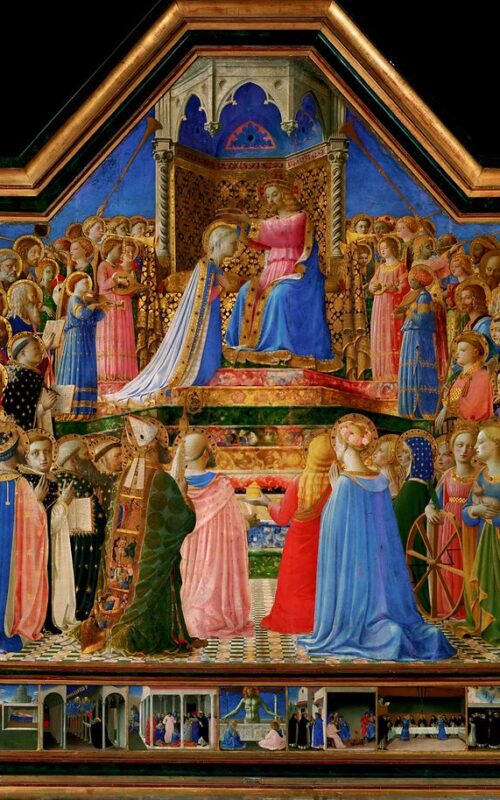
“The coronation of the Virgin” by Fra Angelico
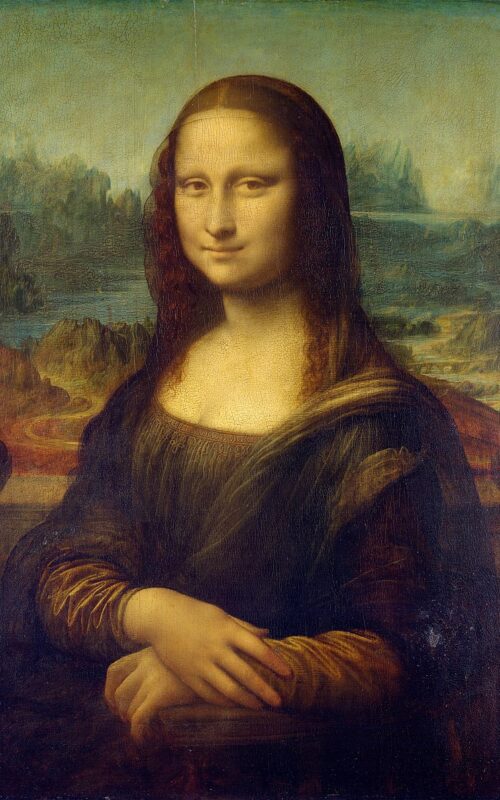
“Mona Lisa” or “La Joconde” by Leonardo Da Vinci
The Italian Painting Gallery in the Louvre is one of the most impressive and popular galleries in the museum. It features a vast collection of Italian Renaissance paintings, ranging from the 13th to the 17th centuries. The gallery is divided into several sections, each dedicated to a different period or school of Italian painting.
Some of the highlights of the Italian Painting Gallery include:
“Mona Lisa” or “La Joconde”
“La Joconde” is the French name for Leonardo da Vinci’s famous painting commonly known as the “Mona Lisa” in English. The painting is a portrait of a woman, widely believed to be Lisa Gherardini, the wife of a Florentine merchant. The painting is known for its enigmatic smile, which has captivated viewers for centuries.
The painting was created between 1503 and 1506 and is currently housed in the Louvre Museum in Paris, France. It is one of the most famous and most visited works of art in the world, and its fame has only increased over the years. The painting has been the subject of countless reproductions, parodies, and references in popular culture.
“La Femme au miroir” is a painting by the Italian Renaissance artist Titian, also known as Tiziano Vecellio. The painting, which translates to “Woman with a Mirror” in English, was created in the early 16th century and is now housed in the Louvre Museum in Paris, France.
The painting depicts a young woman holding a mirror in her left hand while looking over her shoulder to gaze into it. The mirror reflects her back and also shows a partially open door and a landscape in the background. The woman is dressed in rich clothing and jewelry, and her hair is adorned with pearls and gold.
Titian was known for his skillful use of color and light, and “La Femme au miroir” is a great example of this. The colors are warm and rich, and the lighting creates a sense of depth and dimensionality in the painting. The woman’s gaze adds to the overall mood of the painting, creating a sense of mystery and intrigue.
Overall, “La Femme au miroir” is considered to be one of Titian’s masterpieces and is a testament to his skill as a painter. It is also an important example of Renaissance art, with its focus on classical themes, naturalistic style, and technical mastery.
- “The Coronation of the Virgin” by Fra Angelico.
Overall, the Italian Painting Gallery in the Louvre is a must-visit destination for anyone interested in Renaissance art and Italian culture. Its impressive collection of masterpieces is sure to leave a lasting impression on visitors
Louvre Paintings : The French Painting Gallery
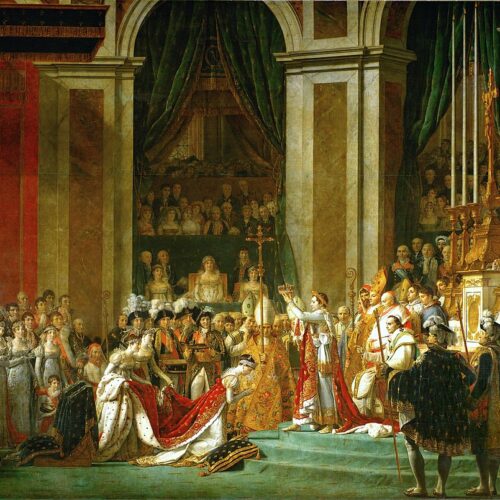
“The Coronation of Napoleon ” by Jacques-Louis David.
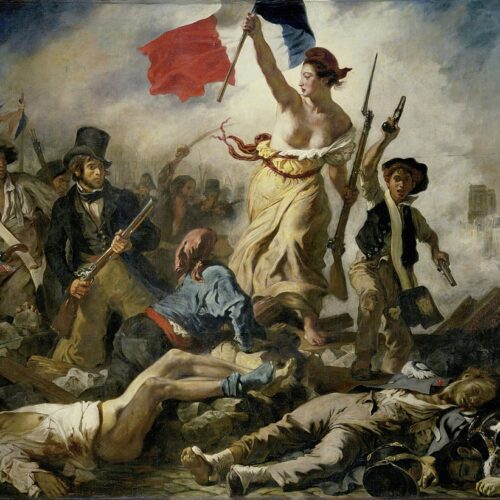
“Liberty Leading the People” by Eugène Delacroix.
The French Painting Gallery in the Louvre is a must-visit destination for anyone interested in the history of French art. The gallery showcases works by French artists from the 17th to the 19th centuries, including masterpieces by some of the most important artists of the era.
Some of the highlights of the French Painting Gallery include:
“The Coronation of Napoleon ” by Jacques-Louis David : This massive painting depicts the crowning of Napoleon Bonaparte as emperor of France in 1804. It is one of the most iconic paintings of the Napoleonic era.
“Liberty Leading the People” by Eugène Delacroix : This powerful painting depicts a symbolic figure of liberty leading a crowd of French citizens in revolt against the monarchy during the July Revolution of 1830. It has become an enduring symbol of the French Republic.
“The Women of Algiers in Their Apartment” by Eugène Delacroix : This vibrant painting depicts a group of women in an interior space in Algiers. It is considered one of Delacroix’s most famous works and has been influential in the development of Orientalist art.
Overall, the French Painting Gallery in the Louvre provides a comprehensive survey of French art from the 17th to the 19th centuries. Its collection of masterpieces is sure to leave a lasting impression on visitors.
The Dutch and Flemish Painting Gallery
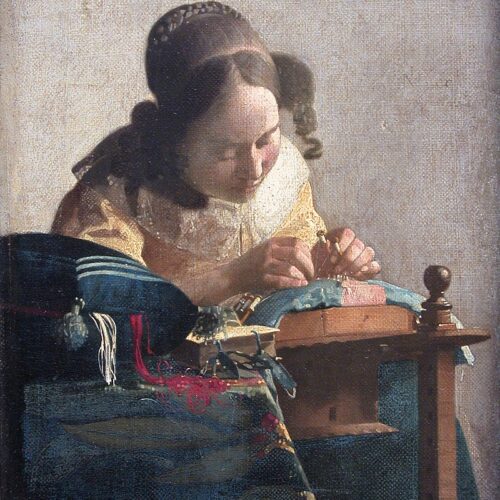
“La dentellière” de Vermeer
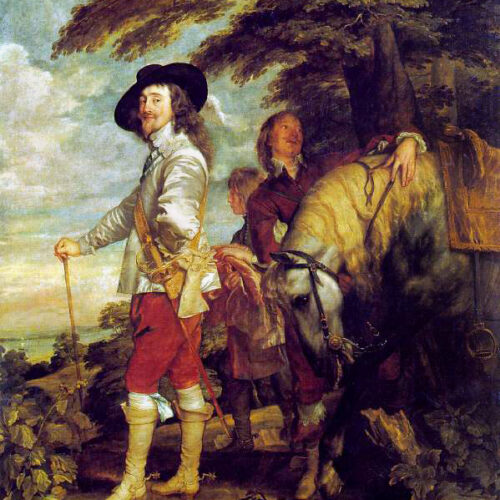
“Charles I of England” de Van Dyck
The Dutch and Flemish Painting Gallery in the Louvre is one of the most extensive collections of Northern European painting in the world. The gallery features over 1,200 works from the 15th to the 17th centuries, including masterpieces by some of the most famous Dutch and Flemish artists of the era.
Some of the highlights of the Dutch and Flemish Painting Gallery include:
“La dentellière” de Vermeer.
“La Dentellière” is a painting by the Dutch artist Johannes Vermeer, also known as Jan Vermeer. The painting, which translates to “The Lacemaker” in English, was created in the late 17th century and is now housed in the Louvre Museum in Paris, France.
The painting depicts a young woman sitting at a table and working on a piece of lace. She is wearing a white cap and a blue apron, and her hands are delicately poised as she works. The room is quiet and peaceful, with a window letting in a soft light and a few household objects visible in the background.
Vermeer was known for his skillful use of light and color, and “La Dentellière” is a great example of this. The colors are muted and subtle, and the lighting creates a sense of depth and dimensionality in the painting. The woman’s posture and expression add to the overall mood of the painting, creating a sense of calm and introspection.
Overall, “La Dentellière” is considered to be one of Vermeer’s most masterful works and is an important example of Dutch Golden Age painting. It is admired for its technical mastery, its use of light and color, and its ability to capture a moment of quiet domesticity and everyday life.
- “Charles I of England” de Van Dyck
“Charles I” is a painting by the Flemish artist Sir Anthony van Dyck, also known as Anton van Dyck. The painting depicts Charles I of England, who was one of Van Dyck’s most important patrons and supporters. The painting was created in the 17th century and is now housed in the Louvre Museum in Paris, France.
In the painting, Charles I is depicted in three-quarter view, wearing rich clothing and jewelry and holding a scepter in his left hand. He is standing in front of a red curtain, with a landscape visible in the background. The painting is large and imposing, and it captures the regal and majestic nature of the king.
Van Dyck was known for his skillful use of color and his ability to capture the personality and character of his subjects. “Charles I” is a great example of this, with the king’s regal bearing and personality shining through in the painting. The use of light and shadow also adds to the overall mood of the painting, creating a sense of depth and dimensionality.
Overall, “Charles I” is considered to be one of Van Dyck’s most important and iconic works, and it is an important example of Baroque painting. It is admired for its technical mastery, its use of color and light, and its ability to capture the essence of one of history’s most important figures.
Overall, the Dutch and Flemish Painting Gallery in the Louvre offers a fascinating look at the art of Northern Europe during the Renaissance and Baroque periods. Its extensive collection of masterpieces is sure to impress visitors.
Louvre Paintings : The Spanish Painting Gallery
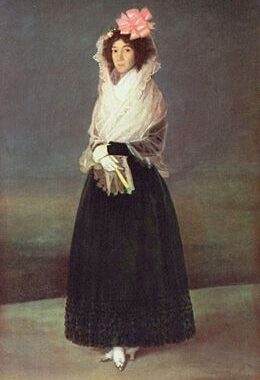
“La marquise de la Solana ” by Francisco de Goya
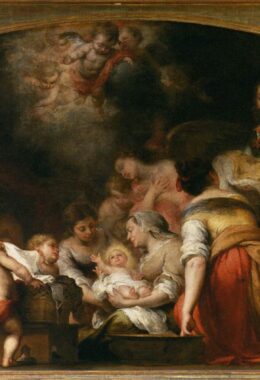
“The Birth of the Virgin Mary ” by Esteban Murillo
The Spanish Painting Gallery in the Louvre houses a collection of works by Spanish artists that spans from the 16th to the 19th centuries. The gallery features a variety of styles and subjects, from religious works to landscapes to portraits.
Some of the highlights of the Spanish Painting Gallery include:
- “The Birth of the Virgin Mary ” by Esteban Murillo
“The Birth of the Virgin Mary” is a painting by the Spanish Baroque artist Bartolomé Esteban Murillo. The painting, also known as “La Natividad de la Virgen María” in Spanish, depicts the birth of the Virgin Mary, who is one of the most important figures in the Catholic religion. The painting was created in the 17th century and is now housed in the Louvre Museum in Paris, France.In the painting, Mary is depicted as a newborn baby, lying on a bed of straw and swaddled in cloth. Her mother, Saint Anne, is shown in the background, surrounded by angels and other figures. The scene is depicted in a warm and inviting light, with a sense of peace and calm pervading the painting.
Murillo was known for his skillful use of light and color, and “The Birth of the Virgin Mary” is a great example of this. The colors are warm and rich, and the lighting creates a sense of depth and dimensionality in the painting. The expressions of the figures also add to the overall mood of the painting, creating a sense of love, tenderness, and devotion.
Overall, “The Birth of the Virgin Mary” is considered to be one of Murillo’s most important works and is an important example of Baroque painting. It is admired for its technical mastery, its use of light and color, and its ability to capture a moment of divine beauty and grace.
- “La marquise de la Solana ” by Francisco de Goya
The painting depicts the Marquise de la Solana, a Spanish noblewoman and close friend of Goya. She is shown seated in a relaxed pose, wearing a white dress and a black shawl. Her hands are clasped together, and she is looking directly at the viewer with a slight smile on her face. The background is a muted blue, which makes the figure of the Marquise stand out and draws attention to her elegant features.Goya was a master of portraiture, and his skillful use of light and shadow, as well as his ability to capture the personality and character of his subjects, is evident in this painting. The Marquise de la Solana is depicted with a sense of grace and elegance, and her relaxed posture and direct gaze convey a sense of confidence and self-assuredness.
Overall, “Portrait of the Marquise de la Solana” is considered to be one of Goya’s most important and iconic works, and it is an important example of the artist’s style during the period of his life when he was in the service of the Spanish court. It is admired for its technical mastery, its use of light and shadow, and its ability to capture the essence of one of Goya’s closest friends and patrons
Overall, the Spanish Painting Gallery in the Louvre offers a fascinating look at the art of Spain over several centuries. Its collection of masterpieces by famous Spanish artists is sure to impress visitors.

